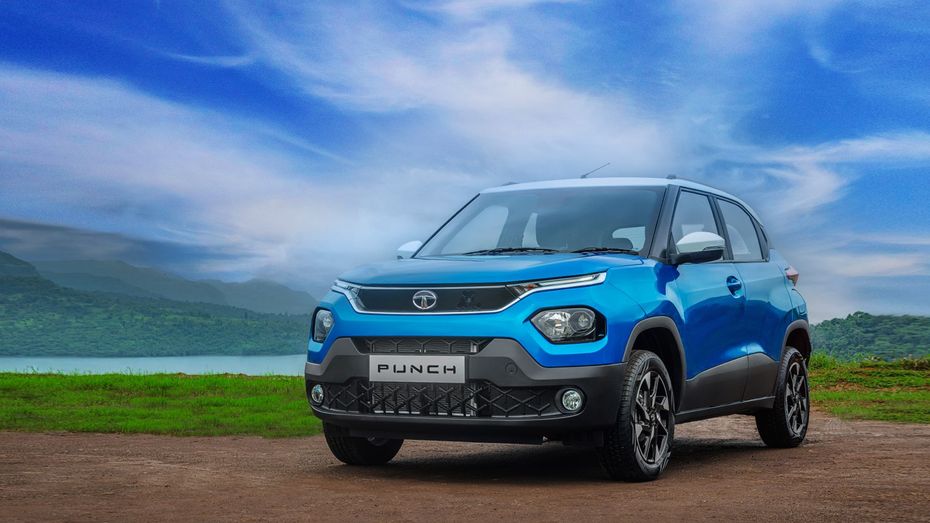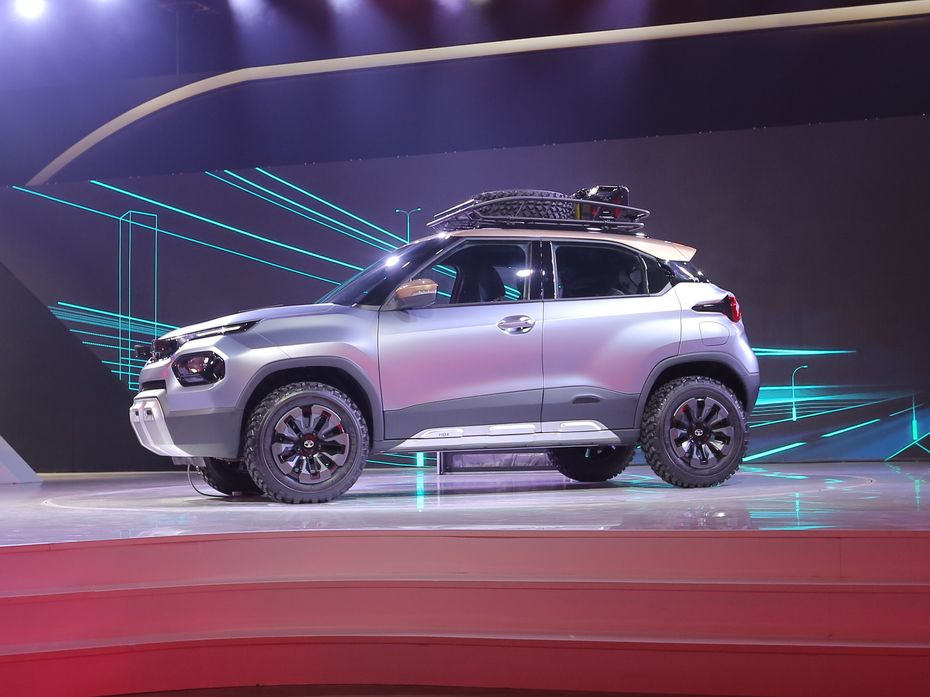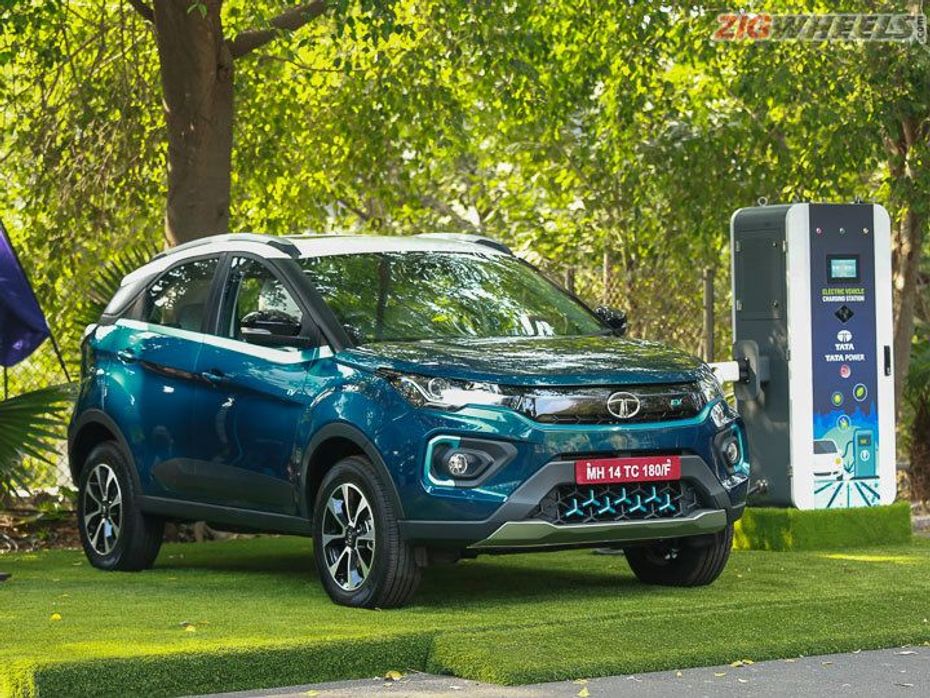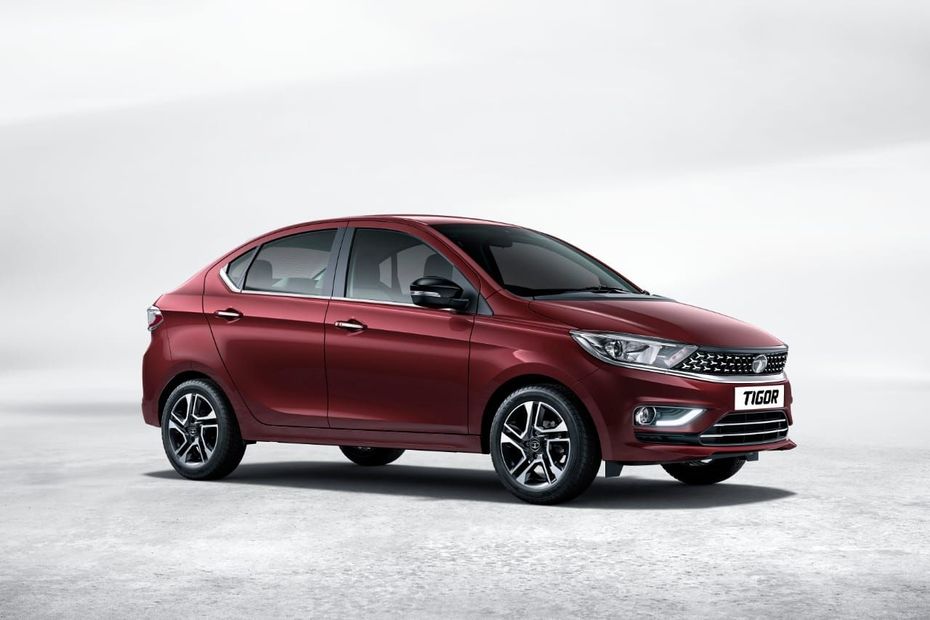
Tata Punch vs Citroën C3| Mini SUVs Tested! | Handling, Ride &...
- Dec 27, 2022
- Views : 14327


Martin Uhlharik speaks softly, almost as though he is thinking, or feeling things over while he speaks. Of his 27-year career Martin has spent the last five with Tata Motors, during which time he has been leading the UK studio, from where the eVision sedan, the 45x, the Impact design, the Sierra Concept and the Punch (formerly Hornbill) were formulated. Martin, as Head - Global Design, Tata Motors, now has higher expectations and pressures to shoulder, as every new Tata will be, directly or indirectly, shaped by his hands.
Q. Are there going to be big changes in Tata’s design language?
MU: A big deciding factor to why people are attracted to our vehicles is the successful Impact design language. So one of the things that we're planning on doing is accelerating the design language. There's not going to be an abrupt shift, but at the same time, there will be a sort of an acceleration and there's a number of technologies. As you know, the automotive landscape is changing over the next decade, and will be quite revolutionary, whether it's electrification, connectivity, ADAS, and the sort of expectations that the customer has. A good design is all about solving problems and creating a positive experience. We already have a good foundation for that with our products, but we just need to lift that to the next level.

Q: Accelerate design? What do you mean by that?
MU: The Impact design language is a very successful recipe, and we've seen how it resonates with the customers. Now, we need to make it even more pronounced, even more accelerated and make an even bigger impact.
It's on all fronts, it's whether we integrate technology, how the customer emotionally connects with the product - both visually, and how they use the product from an interior or exterior point of view. Also, we don't design just a vehicle - we design a brand experience here, and that's very key. It's how you interface with the product when you go on a website and a configurator, how you experience the product at a dealership, or you go for a test drive, how you emotionally interact with the product.
You see a vehicle and within three to five seconds, you'll make a subconscious opinion - I like it, or I don't like it; and you really have to understand that psychology. In the end, you want it to be a positive experience, you want it to be an enjoyable experience.
Q. Impact Design, both v1 and v2, has been very successful; when do we see v3?
MU: Impact, whether it's interior or exterior design, has been a very successful strategy and recipe. We're going to keep a lot of the main motifs of it, but there's going to be an evolution; an accelerated evolution, so you'll see much more digital surfacing.
You know, there's an old saying that says, “the medium is the message,” and it will communicate how the product was designed, and who it's designed for. Design in general reflects the methodology of how it's designed. When I started my career, we used to draw on paper and now, people are using Photoshop or CAD skills, and the aesthetics of design is very much a reflection in a mirror of that methodology.

So you'll still see the “humanity line” on the grille, the “slingshot line” going around the rear, the rear quarter panel and all that - but overall how it blends together will be in a very different way. Also, the automotive space is very competitive, and there are more and more companies competing in the Indian market with global products. So our products have to be able to compete on a global stage.

Q: You have helmed several high visibility projects - Tata 45X Concept, the Tata Sierra Concept, Tata Altroz EV, but which was the first project that you worked on? And which is your favourite Tata?
MU: Well, the first project that I participated in - it was on the third day that I started - was already the Hornbill (Punch) product. I know that that's a product that is forthcoming, but it was actually the third day I joined the company back in 2016. It was my favourite project, because even though I was leading the UK team, it was really a global product project. You know, all three studios participated in the development of the design.

Creating a concept car, I would say, is fairly easy: It's a quick turnaround, it's a six to eight month project, it's sort of a slice of a moment, and a moment of inspiration. It's very emotional, but putting a car in production is much more complicated and challenging. You have to work with engineering, with product planning and you have to really analyse the market.
The price point of the Tata Punch creates a certain set of challenges, but it's probably the product I'm most proud of. When I look at it, all the effort that went into it from everybody, not just design but the whole company, I think it'll be very successful and will really resonate well. So, of all of the vehicles that I've participated in over the last five years, it's the one that really stands out.
Q. How will electrification change car design at Tata?

MU: Electrification ultimately is the future in terms of powertrain technology and is going to unlock real opportunities. When you look at the platform, the platform will create the package, and the package will create a proportion, and the proportion will create a new vocabulary. So you will see a real sort of step change in the way our products look visually. But they still have to have that linear connection with our current portfolio.
Q. Are sedans a dying class of vehicles in India?
MU: I don't think sedans are a dying class of vehicle, but you can definitely see the momentum in the market is now behind SUVs. And it's not just in India, it's globally. There's a number of factors - the right height, the feeling of safety, the command, the driving position, and the overall perception of the vehicle in terms of class and status that comes with it, regardless of the size of the SUV.

So the sedan is a sort of classical vehicle, and you can see that that market share in each segment has been slowly decreasing, not just in India, but globally too. But at the same time, the sedan has that sort of three-box architecture, there's still an attractive way. So I think you'll see sedans presented in a different way; there's going to be a hybrid (approach). You won’t say - this is a sedan, this is an SUV, this is an off-roader, or this is a hatch. You'll see this blurring of the lines in terms of the segments as we go forward, and you'll see elements that are familiar, but at the same time mixed with new elements.
Q. What are you driving now?
MU: I have a Range Rover Evoque and then I have a personal car which is like my weekend drive car.


Tata Punch vs Citroën C3| Mini SUVs Tested! | Handling, Ride &...

Tata Punch Outsells Maruti: What Made It The Best-selling Car Of...

All About The Tata Punch Camo Edition Explained In 10 Real-life Images

2024 Nissan Magnite Facelift Vs Tata Punch: Specifications Compared

Tata Punch Camo Edition Is Back! Priced From Rs 8.45 Lakh

Updated Tata Punch Introduced With New Variants And Features, Sunroof...

Maruti Suzuki Swift CNG Vs Tata Punch CNG: Which Eco-friendly Vehicle...

Top 10 Best Selling Cars In India For The First Half Of 2024: Tata...

The Tata Punch Find 4 Lakh Homes In India, A Brief Look Into Its...
 Tata Nexon
Tata Nexon
 Nissan Magnite
Nissan Magnite
 Tata Curvv
Tata Curvv
 Maruti Wagon R
Maruti Wagon R
 Tata Altroz
Tata Altroz
India's largest automotive community
 Tata Nexon
Rs. 7.99 Lakh
Tata Nexon
Rs. 7.99 Lakh
 Tata Curvv
Rs. 9.99 Lakh
Tata Curvv
Rs. 9.99 Lakh
 Tata Harrier
Rs. 14.99 Lakh
Tata Harrier
Rs. 14.99 Lakh
 Tata Tiago
Rs. 4.99 Lakh
Tata Tiago
Rs. 4.99 Lakh
 Tata Safari
Rs. 15.49 Lakh
Tata Safari
Rs. 15.49 Lakh
 Hyundai Creta
Rs. 11.10 Lakh
Hyundai Creta
Rs. 11.10 Lakh
 Tata Punch
Rs. 5.99 Lakh
Tata Punch
Rs. 5.99 Lakh
 Mahindra Thar ROXX
Rs. 12.99 Lakh
Mahindra Thar ROXX
Rs. 12.99 Lakh
 Tata Nexon
Rs. 7.99 Lakh
Tata Nexon
Rs. 7.99 Lakh
 Mahindra XUV700
Rs. 13.99 Lakh
Mahindra XUV700
Rs. 13.99 Lakh